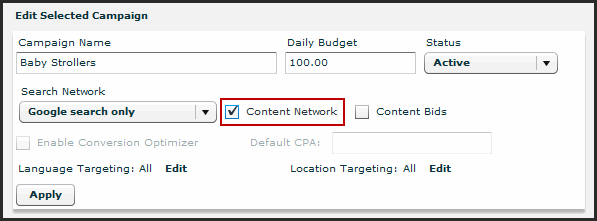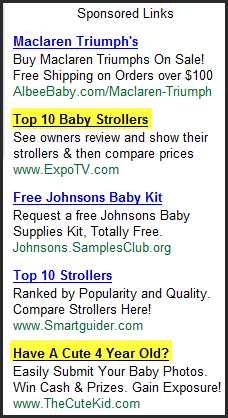
Content Network – Contextual Advertising Tips & Best Practices
Content Network – Contextual Advertising Tips & Best Practices
The content network as it pertains to search engine marketing is the syndication network of Web content where contextual advertising is displayed. In this tutorial, you’ll learn:
- A more in-depth definition of the content network.
- Why the content network is important to your pay-per-click and search marketing efforts.
- When and how to use the content network to your advertising advantage.
So what is the content network, anyway?
A content network is a network of sites that provide content (text, videos, audio, etc.) and allow advertisers to show ads along side it.
The content network is probably the collection of sites on which Google AdWords allows contextual advertising. This is where Google Adsense is displayed; you’re allowed to pay for placement on these sites, on either a cost-per click (CPC) or cost-per impression (CPM) basis.
Why is the content network important?
The content network is offered within your AdWords account, and is turned on for each of your ad campaigns by default:
As you can see, in the above campaign the content network is automatically “turned on”.
So, the content network is important because:
- It’s the Default Setting – It’s defaulted into your AdWords account, which makes knowing when and why to turn it off crucial.
- Volume of Clicks & Impressions – The content network can potentially represent a lot of clicks and impressions.
- Opportunity – Sometimes these additional clicks and impressions can mean more conversions and more business.
- Risk – Conversely, sometimes these additional clicks and impressions can mean more spend, a lower click-through rate, and a net loss as a result of syndicating your ads.
How to optimize your contextual advertisements
There are a pair of core best practices for setting up ad campaigns and ad groups pertaining to content-focused AdWords advertising:
- Separate search and contextual campaigns – If you’re setting up a campaign on the content network, turn search off, and vice versa.
- Structure your content network campaigns differently than your search campaigns – Contextual advertising requires a different ad group structure and ad text strategy than search advertising.
Separating search & contextual advertising campaigns
Because it’s important to structure your content network campaigns differently than your search campaigns, you first want to make sure you’re creating the proper ad campaign structure for either. This means utilizing the right settings.
For Search Campaigns:
For Content Network Campaigns:
These settings will ensure that you create different campaigns for the different types of advertising.
Segmenting search & the content network
Grouping keywords is a very different process on the content network than it is for search.
Optimized Ad Groups within search marketing campaigns contain relatively lengthy, descriptive keyword lists that are semantically similar. This is because ads run against specific queries:
Meanwhile, contextual advertising is targeted using the following methods, according to Google:
“Google continually scans the millions of pages from the content network to look for relevant matches with your keywords and other campaign data.”
These matches are nowhere near as specific. Instead of running my ad against the exact phrase I selected and variations, now I’m running my ad against much more loosely related content:
Note that in the above ad block, ads for baby strollers and four year old baby photos are running along side one another. This is because the ads are targeted to blocks of content, rather than specific queries.
What to Do Differently For the Content Network
Thus, content campaigns require:
- Shorter, Broader Keyword Lists – Instead of creating long, specific lists, you’ll want to create broad keyword lists with thematic keywords.
- Track and Exclude Sites – Instead of tracking negative keyword possibilities, you’ll want to note sites your ads don’t perform well on, and exclude those sites from your campaign.
The ultimate best practice for contextual ads
If you want to advertise on Google but only have time to create one campaign, focus on search.
The people who find your ads on the content network are readers. The people your ads find through search are seekers.
Let’s take a look at the two audiences:
Contextual Advertising
- Passive – They’re reading an article loosely related to your offering.
- Less Likely to Click – They’re there for the article, and surfers are becoming more and more ad averse. They may not even see your ad, and you’ll suffer a low click-through rate.
- Less Likely to Buy – Think about your own buying habits. Are you more likely to buy something while reading an article, or while searching for a solution to a problem?
Search Advertising
- Active – Searchers are looking to get connected to something. They have a question or, often, need to purchase a product or service.
- More Likely to Click – They are after a search listing that answers their query.
- More Likely to Convert – As we said: searchers are actively seeking solutions; if you can provide one, they’re likely to give you their business.




